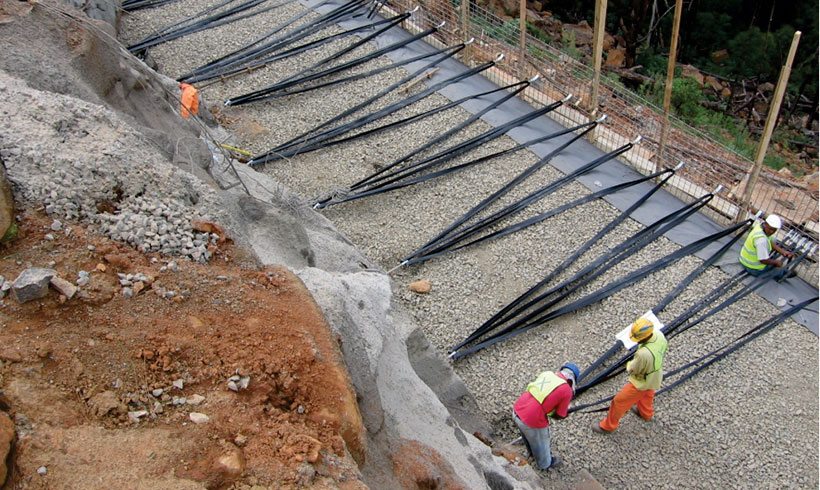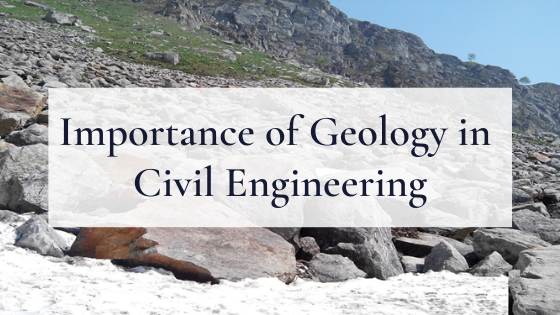Fascination About Geotechnical Engineering For Construction Projects
9 Simple Techniques For Geotechnical Engineering For Construction Projects
Table of ContentsThe smart Trick of Geotechnical Engineering For Construction Projects That Nobody is Talking AboutNot known Facts About Geotechnical Engineering For Construction ProjectsUnknown Facts About Geotechnical Engineering For Construction Projects9 Simple Techniques For Geotechnical Engineering For Construction ProjectsSome Known Facts About Geotechnical Engineering For Construction Projects.Geotechnical Engineering For Construction Projects Fundamentals ExplainedThe 30-Second Trick For Geotechnical Engineering For Construction Projects
and Kovacs, W. (1981 ), An Intro to Geotechnical Design, Prentice-Hall, Inc. Deep Scan Tech (2023 ): Deep Scan Technology discovers concealed frameworks at the site of Denmark's highest structure. "Geofrost Coring". GEOFROST. Retrieved 20 November 2020. Han, Jie (2015 ). Principles and Technique of Ground Enhancement. Wiley. ISBN 9781118421307. RAJU, V. R.Ground Improvement Technologies and Instance Histories. Singapore: Research Posting Solutions. p. 809. ISBN978-981-08-3124-0. Ground Enhancement Concepts And Applications In Asia. Pariseau, William G. (2011 ). Design evaluation in rock technicians. CRC Press. Hegde, A.M. and Palsule P (Geotechnical Engineering for Construction Projects).S. (2020 ), Performance of Geosynthetics Reinforced Subgrade Subjected to Repetitive Lorry Loads: Speculative and Mathematical Research Studies.
Cengage Understanding, Stamford, 666 p. Atkinson, J., 2007. The technicians of soils and structures. The Observational Technique in ground design principles and applications.
Excitement About Geotechnical Engineering For Construction Projects
Lab and field screening plays a critical duty in this process. By extracting samples from the planet's subsurface and applying a collection of tests, geotechnical designers can forecast the practices of dirt layers and evaluate their suitability for numerous construction endeavours. The essence of geotechnical engineering in civil design can not be overstated, attributable to several factors: The initial action in any type of geotechnical research study includes establishing the dirt type at the building site.
Understanding these characteristics makes certain that only appropriate dirt types are selected for the development, thereby avoiding prospective architectural failings. The structure functions as the bedrock of any construction project. Selecting the ideal structure kind is a choice that rests on the comprehensive evaluation given by geotechnical engineering. This makes certain the durability and security of structures by accommodating the tons they will birth.

Geotechnical site investigation is an essential step in the planning and execution of any building job. It includes the collection and analysis of information related to the physical buildings of soil and rock underneath a proposed construction site. This details is vital for the layout and building and construction of safe, stable, and sustainable structures.
The Best Guide To Geotechnical Engineering For Construction Projects
, likewise understood as subsurface exploration, involves a collection of tasks aimed at figuring out the soil, rock, and groundwater problems at a building and construction website. The main purposes are to determine prospective geotechnical dangers, evaluate the engineering residential or commercial properties of subsurface products, and offer recommendations for the style and construction of foundations, preserving walls, and various other structures.
The workdesk research aids in recognizing possible geotechnical problems and preparing the succeeding fieldwork. This includes observing the topography, drain patterns, existing frameworks, plant life, and any indications of instability or erosion.
Excitement About Geotechnical Engineering For Construction Projects
Shallow examination pits are excavated to directly observe and sample the dirt and rock. This method works for examining the top layers of the subsurface and determining near-surface risks. Non-invasive geophysical approaches, such as seismic refraction, ground-penetrating radar (GPR), and electrical resistivity tomography (ERT), are made use of to map subsurface problems and detect anomalies.
Dirt and rock samples gathered during the area examination are subjected to laboratory testing to determine their physical and mechanical residential properties. These tests supply necessary data for geotechnical evaluation and layout.
The key advantage of geotechnical site examination is ensuring the safety and security and stability of frameworks. By recognizing the subsurface problems, engineers can make structures and other structural aspects that can hold up against the loads and ecological pressures they will certainly go through. This decreases the danger of settlement, decrease, and architectural failure.
Not known Factual Statements About Geotechnical Engineering For Construction Projects
Recognizing dirt characteristics can assist the selection of excavation methods, dewatering methods, and ground enhancement procedures. This makes certain reliable and risk-free building and construction techniques. Geotechnical website examinations are usually called for by constructing codes and guidelines. Sticking to these demands makes certain compliance with legal and safety and security requirements, staying clear of prospective lawful responsibilities and job hold-ups.
This details is invaluable for job managers, architects, and service providers in developing sensible schedules, budget plans, and contingency plans. Geotechnical Engineering for Construction Projects. Skyscraper in a Coastal AreaIn a coastal city, a skyscraper residential building was intended on a site with thought loosened sand deposits and a high water table. An in-depth geotechnical investigation, consisting of borehole drilling, CPT, and geophysical studies, was performed
Some Known Factual Statements About Geotechnical Engineering For Construction Projects
Based on these searchings for, the foundation design was changed to consist of deep pile foundations prolonging into stable strata, and ground enhancement strategies, such as vibro-compaction, were executed to minimize liquefaction threats. This proactive technique ensured the security and stability of the structure while preventing expensive post-construction removal. Facilities Development on a Sloping TerrainA significant framework project, involving the building of a highway and bridges, was intended on a hilly terrain with high slopes.

The Leaning Tower of Pisa (Italy), a renowned building wonder, is well known for its unintentional tilt from considerable geotechnical issues. The tower's foundation was inadequately designed to deal with the soft, unpredictable soil under it, causing uneven negotiation and its distinct lean. Our world is populated with excellent facilities projectsfrom looming high-rise buildings to sprawling bridgesall standing testament to the advancement of the numerous construction tools and techniques offered.
Geotechnical design is a specific field within civil design that concentrates on studying useful link the actions of planet materials. This branch dives deep right into the groundinvestigating just how the dirt, rock, and groundwater at a building and construction site can influenceand be influenced bythe infrastructure that we put up on and right into them. Prior to a solitary brick is laid or a concrete structure poured, geotechnical engineers probe into the earthgathering essential data concerning the site's soil structure, rock framework, and groundwater degrees.
The Greatest Guide To Geotechnical Engineering For Construction Projects

is a device utilized to examine the stability and load-bearing ability of piles throughout setup, leveraging the concept of wave breeding. It optimizes building effectiveness by providing real-time evaluations, hence making certain safe and effective stack foundations. One of the sensible applications of geotechnical design entails determining and carrying out the right techniques for foundation building.
Stack driving represents greater than the mere act of putting structural components into the ground. As a matter of fact, it is a carefully managed procedure of transferring a structure's tons past the less steady soil layers better to the surfacedown to the more considerable strata that exist beneath. In the instance of heap driving, additional hints take into consideration just how geotechnical designers expertly utilize this strategy to evenly distribute the framework's weight.